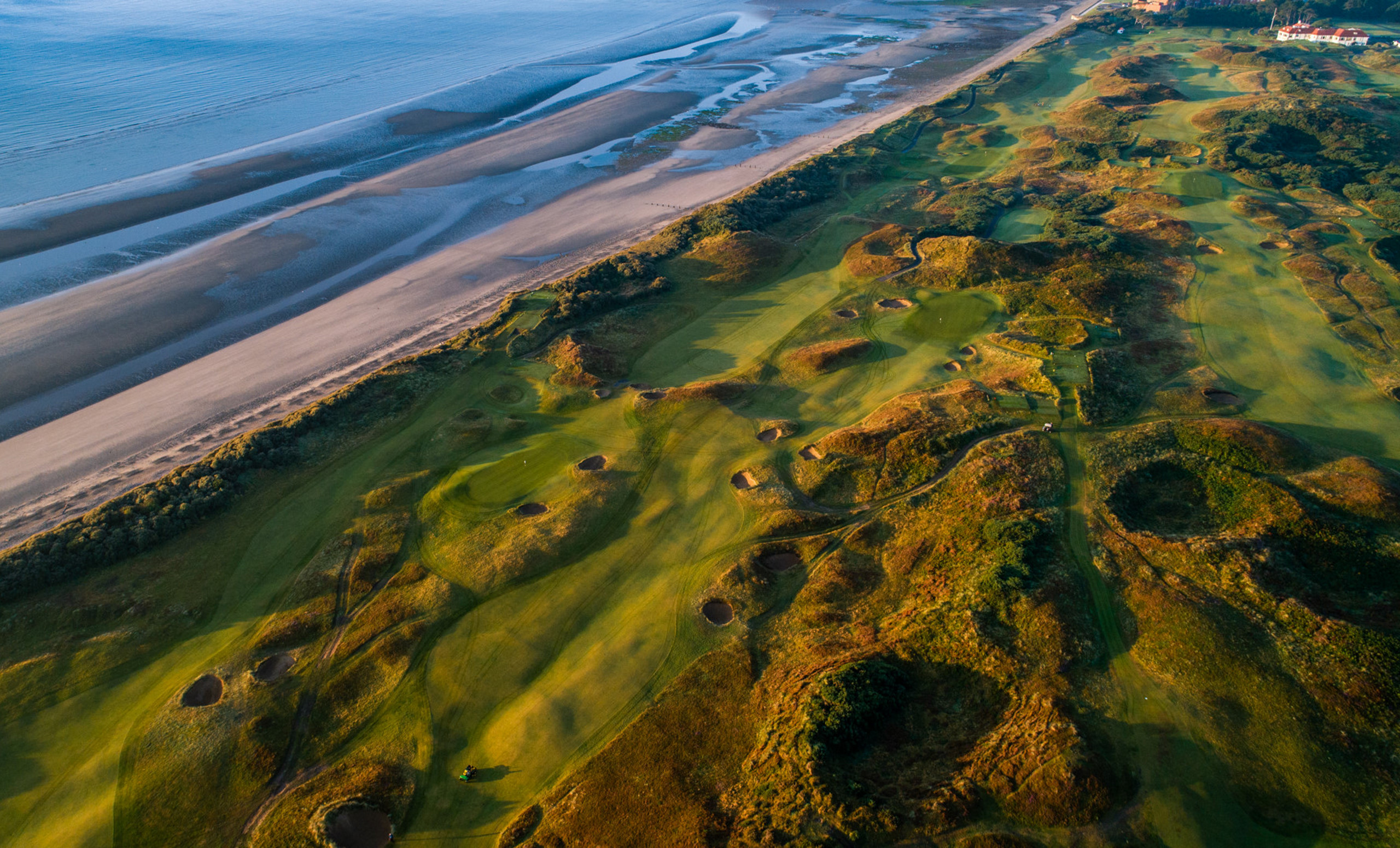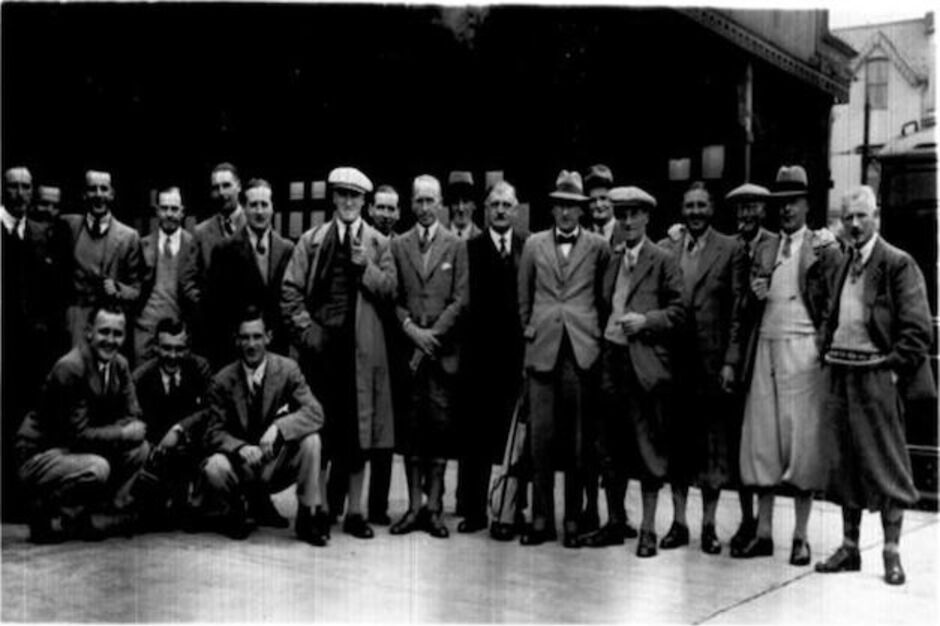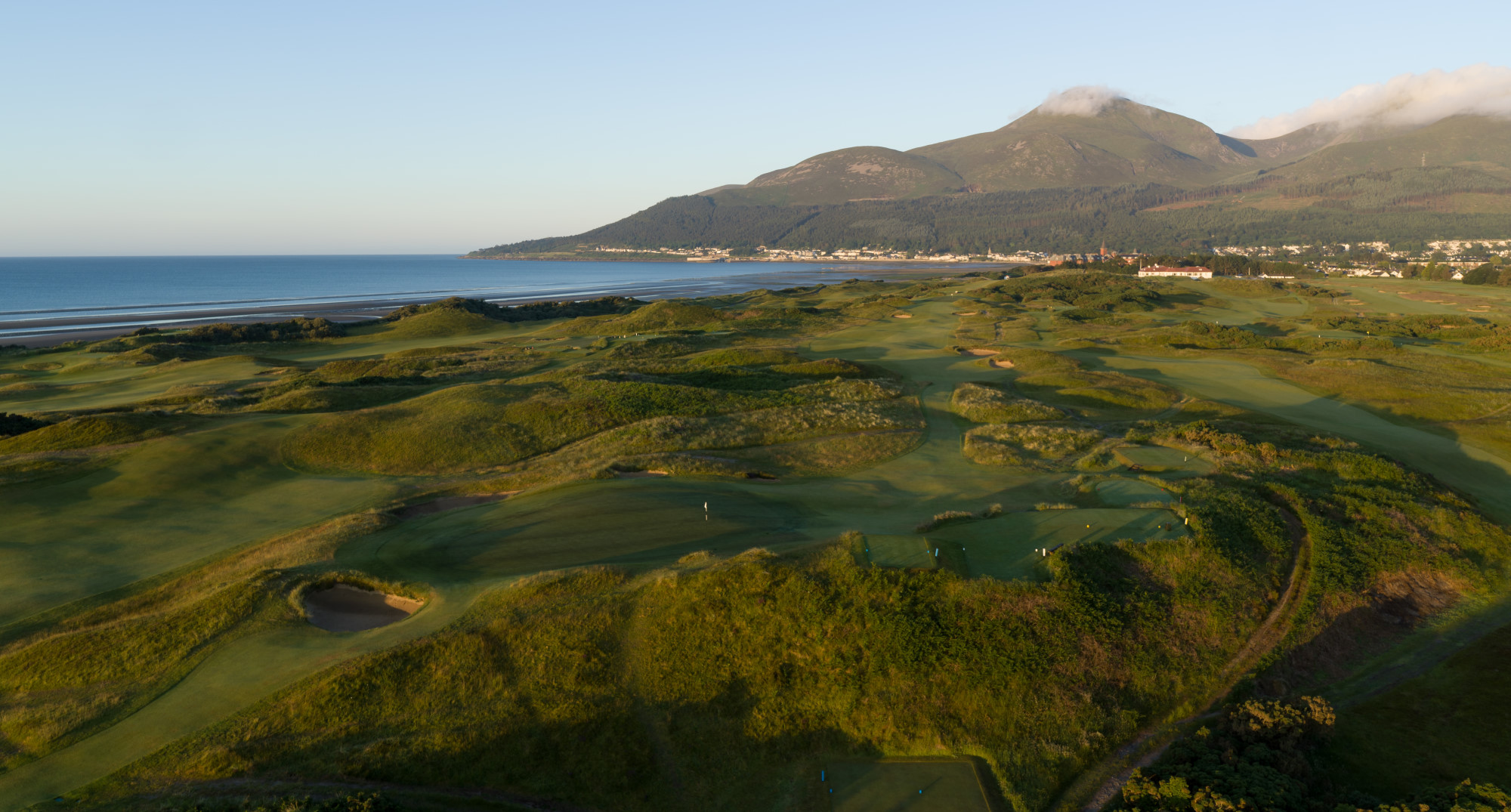The Royal County Down Golf Club was founded in 1889 by a group of influential business and professional men from Belfast. There is some evidence to suggest that even before then a rudimentary form of golf was being played by the townsfolk on the rabbit warren at Newcastle. However, it was the development of a railway line from Belfast to Newcastle by the Belfast & County Down Railway and the emergence of Newcastle as a desirable seaside resort in Victorian times which provided the impetus for the first formal golf course.
The development of the course is described in fascinating detail in Richard A. Latham's excellent book, "The Evolution of the Links at Royal County Down Golf Club" (Radial Sports Publishing Limited, 2006). George L. Baillie, a Scottish schoolteacher who came to Belfast and quickly embarked on a personal crusade to establish golf courses, was mainly responsible for the original nine-hole layout. That course was opened on 23rd March 1889, and almost immediately the newly-formed council of the club, in a mixture of enthusiasm and parsimony, commissioned Old Tom Morris to travel over from St. Andrews “for a sum not to exceed £4” to inspect what existed and advise on a second nine.
















